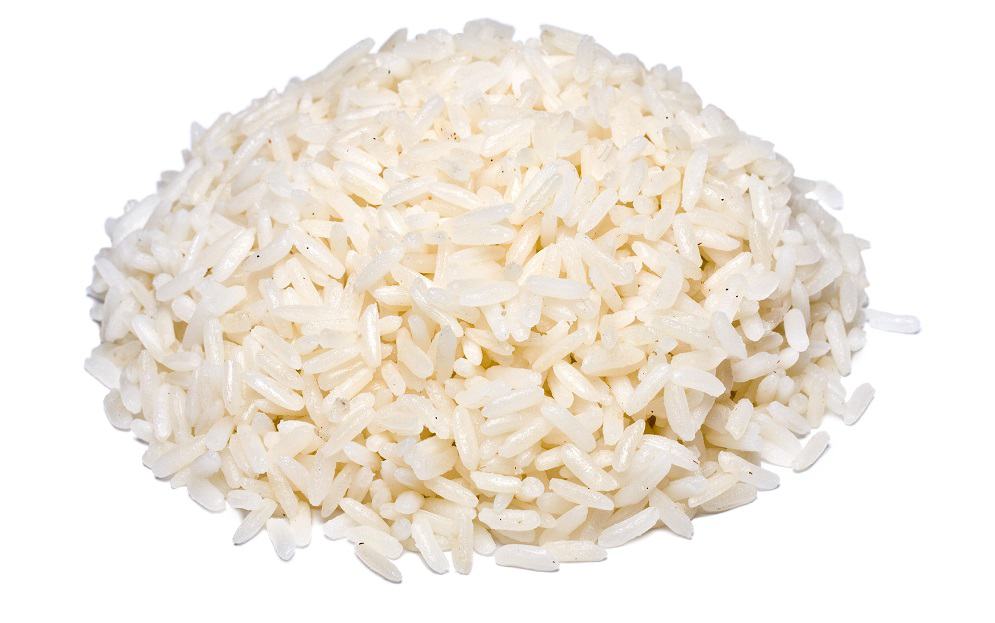Rice is one of the most important food crops in the world. Along with corn and wheat, they supply approximately 42% of all the calories in the world combined. White rice in particular is a common stable across the world, especially in Asian countries where it is present in almost every meal.
For most people, white rice will fit perfectly in a vegan diet. Many vegans enjoy white rice for its short cooking time and that it is a quick source of carbohydrates. Vegans can also receive beneficial nutrients from enriched white rice such as iron, thiamin, riboflavin, niacin, pantothenic acid, pyridoxine, and folic acid.
Some subsets of vegans might not recognize white rice as vegan. Although rare, enriched white rice could contain some added nutrients that could be animal-derived.
Table of Contents
White Rice

Although its date of domestication is still being heavily debated, rice has been found in archaeological sites dating back to 8000 BC. White-grained rice in particular is more associated with modern rice cultivars as traditional varieties of rice tend to have red grains(1).
Along with corn and wheat, rice is one of the most important food crops in the world – especially for human consumption since a significant amount of corn and wheat produced goes into livestock feed production.
The term “white rice” conventionally refers to the process of rice production more than it refers to the variety of rice grown. Specifically, white rice is milled rice that has had its outer layers removed: the husk, the bran, and the germ layer.
Comparatively, other commercially available rice products such as brown rice, red rice, gold rice, and black rice are all rice grains that still contain the outer layers that were removed from white rice – only the inedible outer hull layer is removed. The different colors pertain to the different pigments found in the different cultivars of rice plants.
Many rice plant species and varieties exist and are farmed for rice. However, the most widely known and consumed rice comes from the Asian Rice plant (Oryza sativa). This plant can have over 40,000 different varieties but it has two major subspecies: Oryza sativa ‘indica’ and Oryza sativa ‘japonica.’ The distinct difference between the two subspecies is that O. sativa indica produces long-grained rice while O. sativa japonica produces short-grained rice.
White rice is typically prepared by boiling or steaming, which is why cooked white rice is mostly water – about 70%. The remaining macronutrient composition of cooked white rice is mostly carbohydrates and minimal protein content.
Some companies enrich white rice with a list of vitamins and minerals – especially B vitamins. This is because studies have shown that diets primarily consisting of unenriched white rice can lead to nutrient deficiencies such as beriberi– a neurological disease caused by a vitamin B1 deficiency. In some countries like the US, the enrichment of white rice has become law.
Is White Rice Considered Vegan?
For the most part, rice is considered to be vegan. As a food source, it is derived from the rice plant and is typically processed as is. However, some factors can lead to white rice being considered non-vegan.
Firstly, white rice can be considered non-vegan for vegans who abstain from processed food. Since white rice undergoes numerous production processes, these types of vegans would prefer to eat brown rice as it undergoes minimal industrial processing.
Vegans who also prefer their diet to consist of food items that do not have to be cooked also abstain from white rice. Colloquially called “raw vegans,” they prefer alternatives (e.g., cauliflower rice) that fit their dietary restrictions.
Another factor to consider in the veganism of white rice is whether it is enriched with nutrients. Since the process of producing white rice strips away a significant amount of nutrients found in the outer layers, some consider white rice to be empty calories. To address this nutrient deficiency, some companies enrich white rice with nutrients such as iron, thiamine (vitamin B1), riboflavin (vitamin B2), niacin (vitamin B3), pantothenic acid (vitamin B5), pyridoxine (vitamin B6), and folic acid (vitamin B9) (2).
Complications of whether white rice is vegan can depend on where the enrichment nutrients are sourced. While most can be derived from plant sources or synthetically made, some of these nutrients can be derived from animal sources.
Take riboflavin and niacin as examples; While companies can produce these using non-animal products, there are cases that the production of these vitamins can include animal products.
The biggest issue with the above is that most manufacturers of enriched white rice fail to make the distinction. It's best to contact the company to confirm where their added nutrients are sourced from.
White Rice vs Brown Rice

When vegans talk about rice, a popular debate usually comes up between white rice and brown rice. As mentioned, brown rice is technically a less processed version of white rice since brown rice still has layers that would have been removed to produce white rice.
Many people recommend brown rice over white rice for the nutritional content. In general, brown rice contains more vitamins and minerals than white rice. It also contains higher fiber content and even antioxidants.
However, some vegans prefer white rice over brown rice just because white rice has a softer texture, and that white rice is quicker to cook.
Furthermore, enriched white rice presents as a viable source for a wide array of B vitamins. Enriched white rice is also recommended for pregnant women for the folic acid content.
Some people also prefer white rice as white rice is typically cheaper than brown rice. Even though brown rice involves fewer processes to produce, the demand for white rice is much greater. Thus, the immense supply of white rice brings down their price while the lower demand for brown rice increases its price.
Furthermore, white rice has a significantly longer shelf life compared to brown rice. This is because uncooked brown rice contains oils in the bran layer that can promote spoilage. With proper storage conditions, one can store uncooked brown rice for 6 to 12 months. Comparatively, polished white rice can be properly stored for 25 to 30 years without any problems.
Due to the significance of rice in overall global consumption, many studies have investigated the difference between white rice and brown rice on a wide array of different physiological parameters.
For example, brown rice has a slower gastric emptying rate (i.e., the speed with which substances leave the stomach after ingestion) compared to white rice (3). A slower gastric emptying rate in brown rice is primarily attributed to the presence of the bran layer. This has several implications for brown rice over white rice.
For one, the slower gastric emptying rate of brown rice can be a factor to the lower glycemic response induced by brown rice. Glycemic response is the effect of a consumed meal on an individual’s blood sugar levels. Food items with lower glycemic indices are recommended, especially for people who need to monitor their blood sugar levels such as people with diabetes.
Second, gastric emptying rates have long been associated with weight and size control. With metabolic rates involved, studies have shown that an inverse relationship between surface area and gastric emptying rates exists. This means that individuals with longer gastric rates tend to be smaller (4).
References




